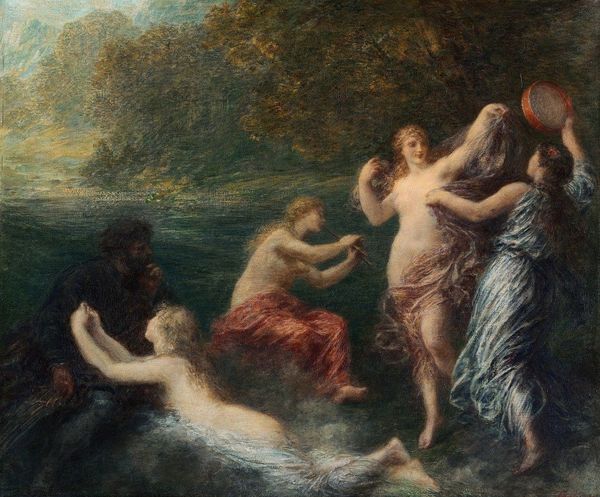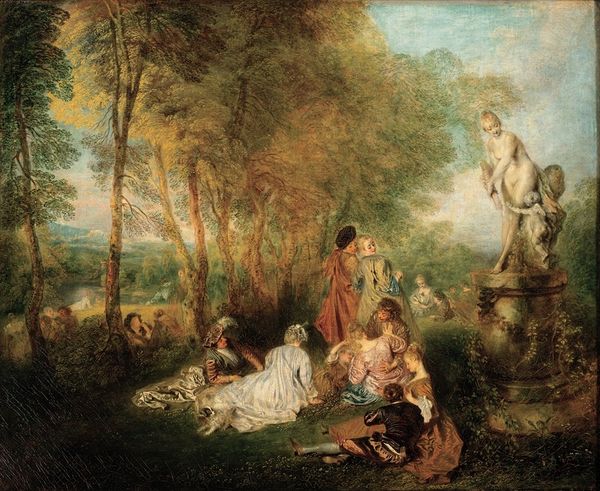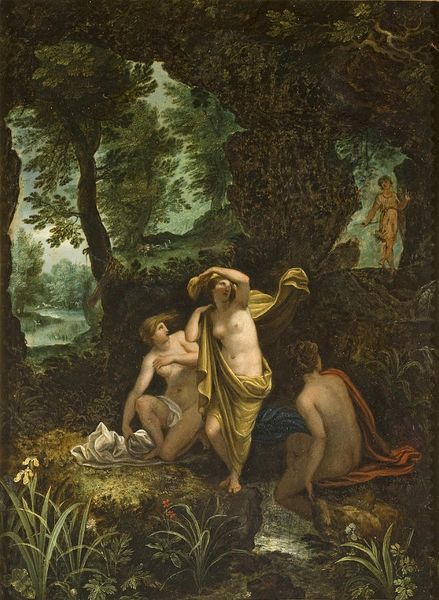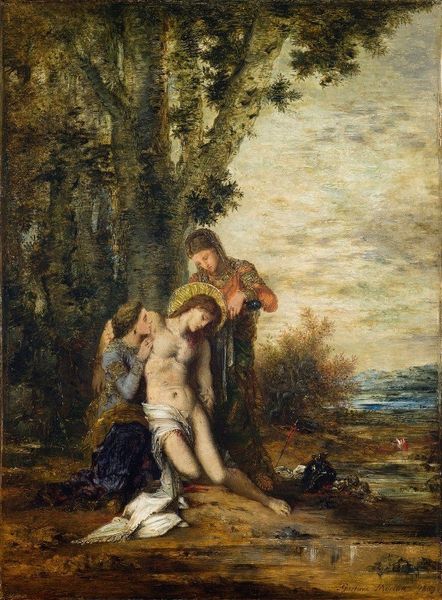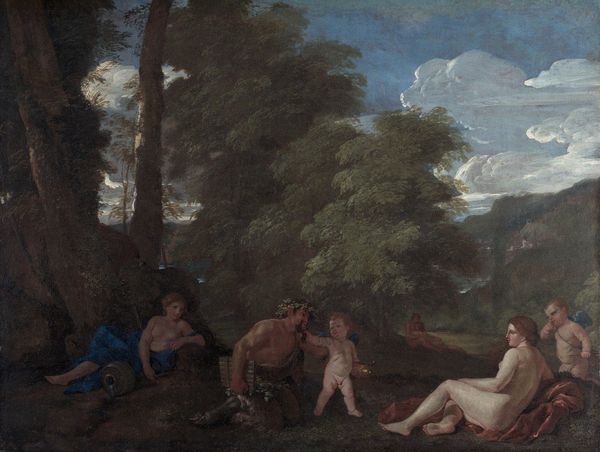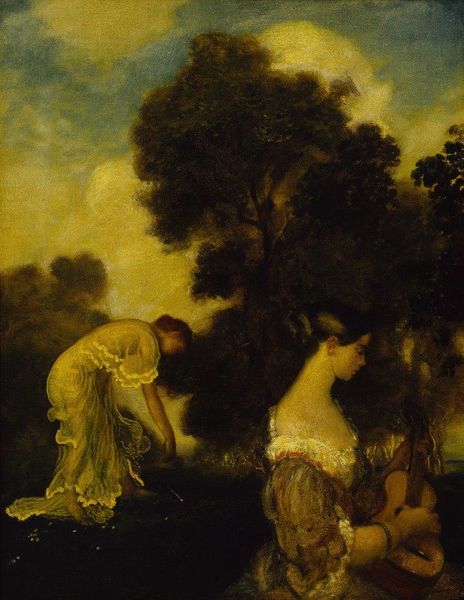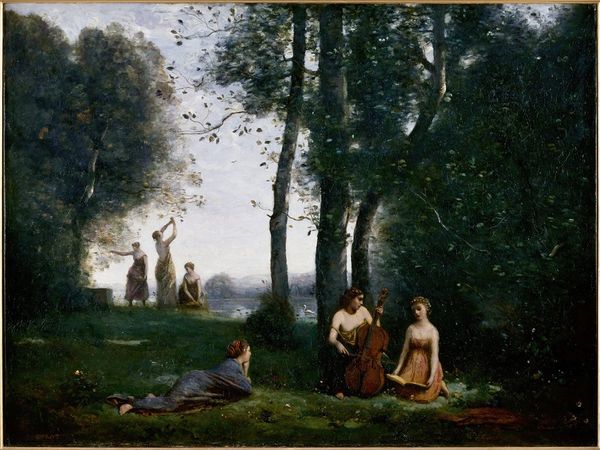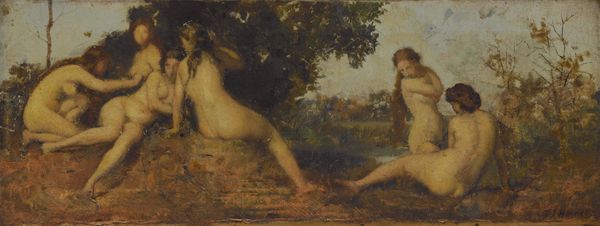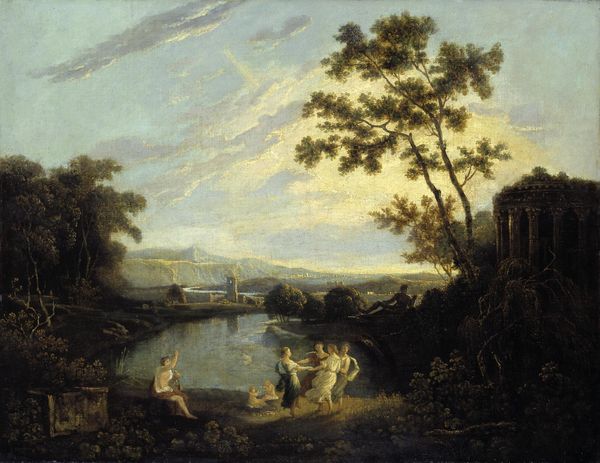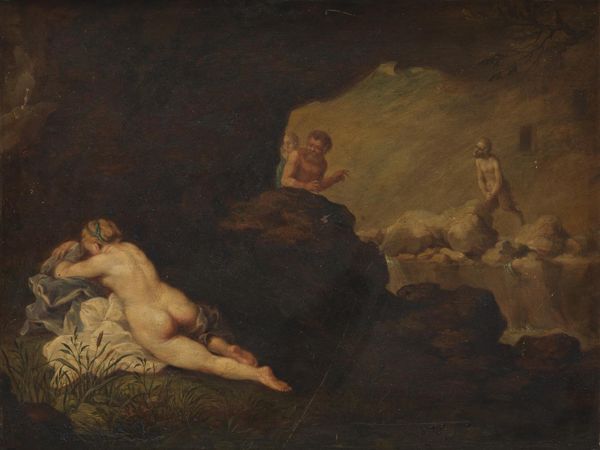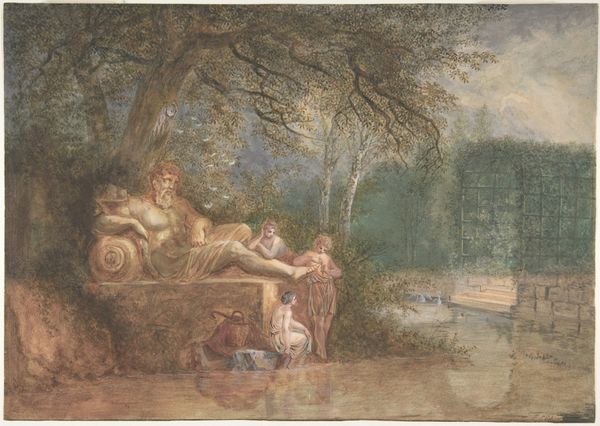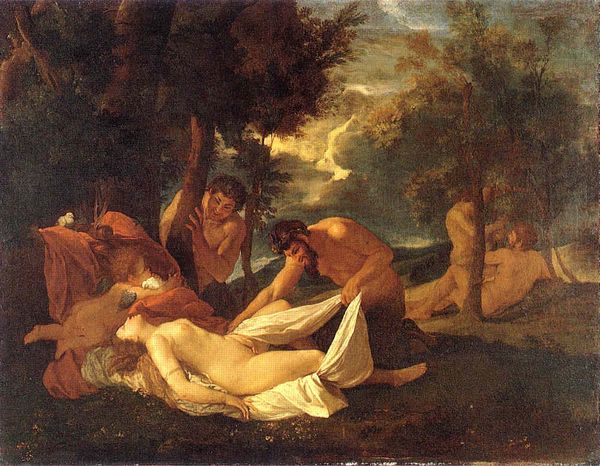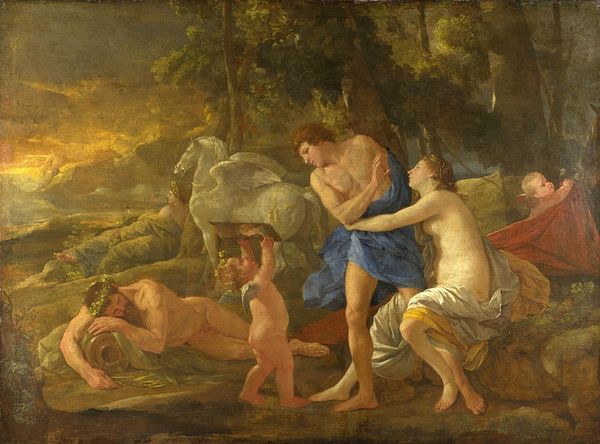
Copyright: Public Domain: Artvee
Curator: Narcisse Virgilio Díaz’s oil on canvas, "Idyll," painted in 1853, depicts a secluded woodland scene. Editor: There's a striking sense of arrested motion in this painting. A pocket of figures seems caught in a moment of peaceful contemplation within a much larger, teeming forest. Curator: Yes, Diaz masterfully uses light and shadow. See how the dappled sunlight illuminates the figures, contrasting against the darker, mysterious background. Light in this way is often used to depict the sacred space in other artistic mediums. It invites a kind of introspection, a feeling of stepping outside ordinary time. Editor: Precisely! That interplay hints at something deeper. The figures themselves, their partial nudity, and serene poses... it evokes a certain mythology, doesn't it? One begins to question how women in these “idyllic” circumstances reflect and shape power and spectatorship, both in visual culture and lived reality. Curator: Well, one can clearly notice, the feminine body idealized—the smoothness of skin, the relaxed postures, there is something innately symbolic and of their womanhood being aligned to their environment. Díaz engages with classical archetypes while updating them for a contemporary, romantic sensibility. It makes me consider if he had intention to reclaim or reinforce the myth? Editor: It makes you wonder about the viewer's own romantic sensibility, or at least Diaz's intended viewer! As those gazes upon the figures natural placement, its also about an alignment to ideas of colonial encounters with untouched, Edenic land or other narratives wherein some exist simply as 'nature' to be enjoyed, even dominated. It highlights critical tensions between what appears idyllic and what those aesthetic choices might ultimately represent. Curator: That’s true, I believe you hit on some relevant questions—to think on idyllic landscapes with that contextual awareness opens new interpretative pathways. Editor: Absolutely! It requires a critical gaze at beauty itself and what social, political, or conceptual work beauty performs. Curator: I am grateful that we had a moment to reflect on Diaz’s artwork today, considering his creative process through the lens of historical and contemporary critique. Editor: Likewise. Exploring Diaz's Idyll helps us consider art history not just as a static story, but as a field ripe for reimagining and social discourse.
Comments
No comments
Be the first to comment and join the conversation on the ultimate creative platform.
